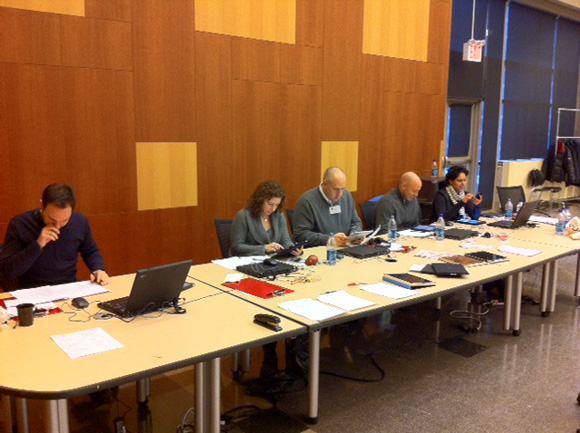The Daily Arrives
At last, The Daily is here. We've known about it at Joe Zeff Design for some time, having been engaged by News Corp. last fall to contribute artwork for prototypes. It's changed considerably since then, yielding an application with many plusses and minuses. On the plus side, the app is attractive and brimming with content. A Cover Flow-like carousel turns every page into an entry point, with labels that show which pages have already been viewed. The user’s location is billboarded on the home screen alongside the hyperlocal time and temperature — a nice personal touch. Engagement opportunities abound — polls that yield real-time results, interactive crossword and Sudoku puzzles, and real-time tweets on many of the pages. Sports fans will appreciate the customizable sports dashboard with live news feeds about your favorite teams. The Daily includes advanced sharing tools, enabling readers to give an article a thumbs up or down and even record an audio comment, offering the potential to turn every article into a conversation.
Above: Step right up to the carousel of content.
Pretty impressive. It’s easy to see where Rupert spent $30 million in development costs.
That said, there’s considerable room for improvement.
The content feels old. Because it is old. It makes no sense to build a state-of-the-art app around the anachronistic daily news cycle. Online news should reflect immediacy, with up-to-the-second words and pictures. One article cites Punxsutawney Phil’s accuracy rate but fails to tell the reader whether the groundhog saw his shadow this morning. (He didn’t.) That’s inexcusable. If the technology exists to put Twitter feeds on news pages and real-time wire copy on sports dashboards, then those same tools should be used to provide updated, time-stamped content in every section, including the front page headline and image.
The navigation could be sharper. Throughout the app, graphics that look like buttons don’t act like buttons, which frustrates the user. On one page there’s literally a flashing red button in the middle of the page. It does nothing other than flash red. A graphic promoting the sports dashboard fails to take you to the sports dashboard, and a buttonlike callout teasing the daily puzzles turns out to be just that — a tease. Web links that appear in text are just as untappable.
Above: They sure look like buttons.
The app contains video and audio summaries of the news that seem unnecessary. They are buried under the carousel, completely disconnected from the rest of the publication, and redundant to the content that appears elsewhere in the app. A much better use of these features would be to update them hourly.
I'm hopeful The Daily will evolve, and push other newspapers to keep pace. With all of the fanfare surrounding The Daily, I was hoping for a truly interactive newspaper — “new journalism” as Rupert himself put it. I’m not seeing it. Yet.
Update: The Day After, 8 a.m.
Day 2 is definitely an improvement over Day 1. Few if any fake buttons — today the sports dashboard link works. Nice interactive features: a pre-shooting interview with Gabby Gifford; a 360 view from an unaffordable luxury box at the Super Bowl; a fun video interview with Fox Sports cousins Terry Bradshaw and Howie Long about their Super experiences; an invitation to submit letters to the editor via e-mail; and more.
And The Daily reports that the groundhog did in fact see his shadow. A day ago.

![photo[1]](http://static.squarespace.com/static/50b95455e4b03f5205014a93/50b98f21e4b0ef0c2cb1b368/50b98f29e4b0ef0c2cb1b927/1296691040000/?format=original)
























































